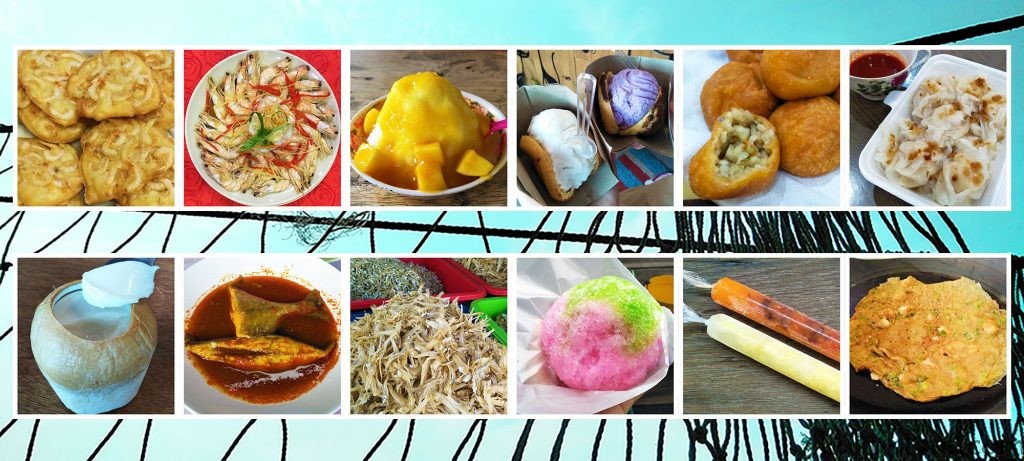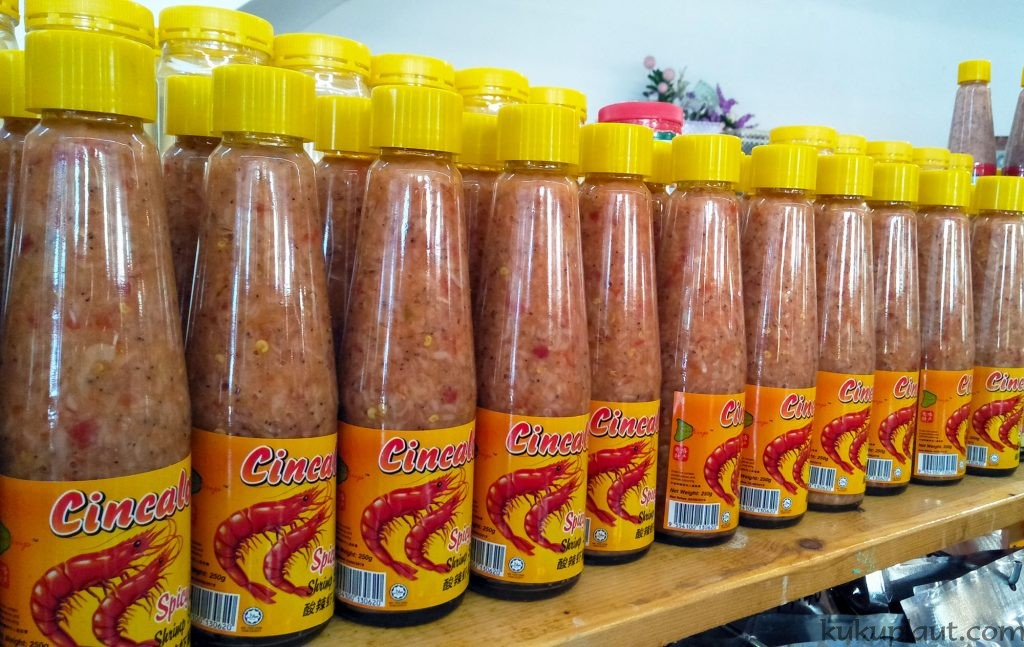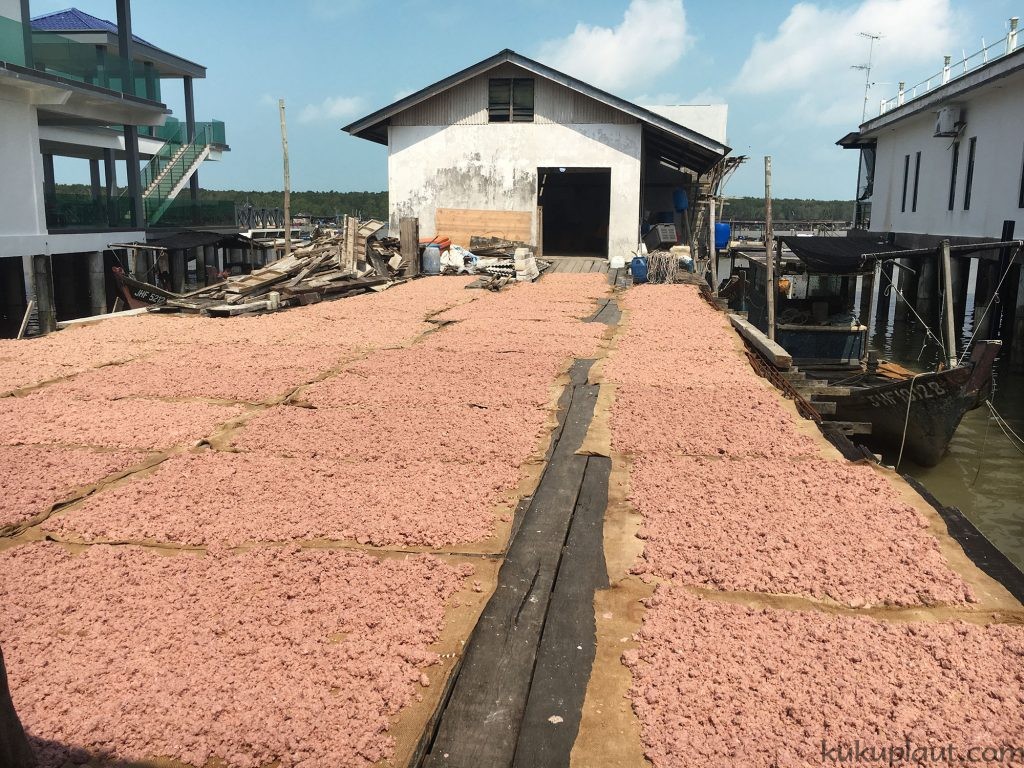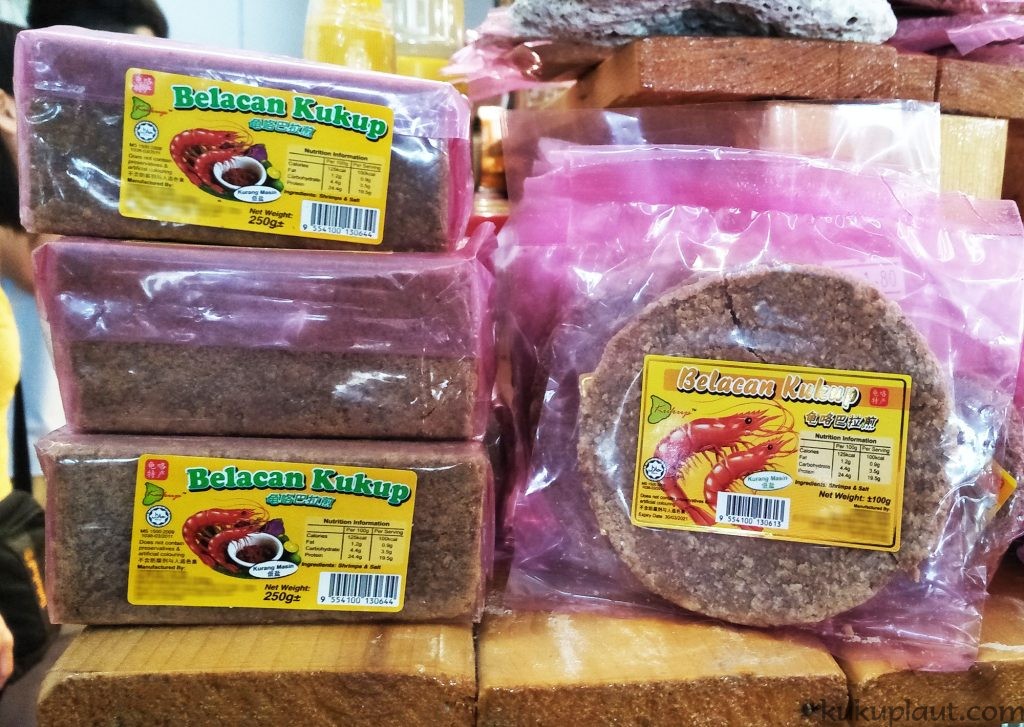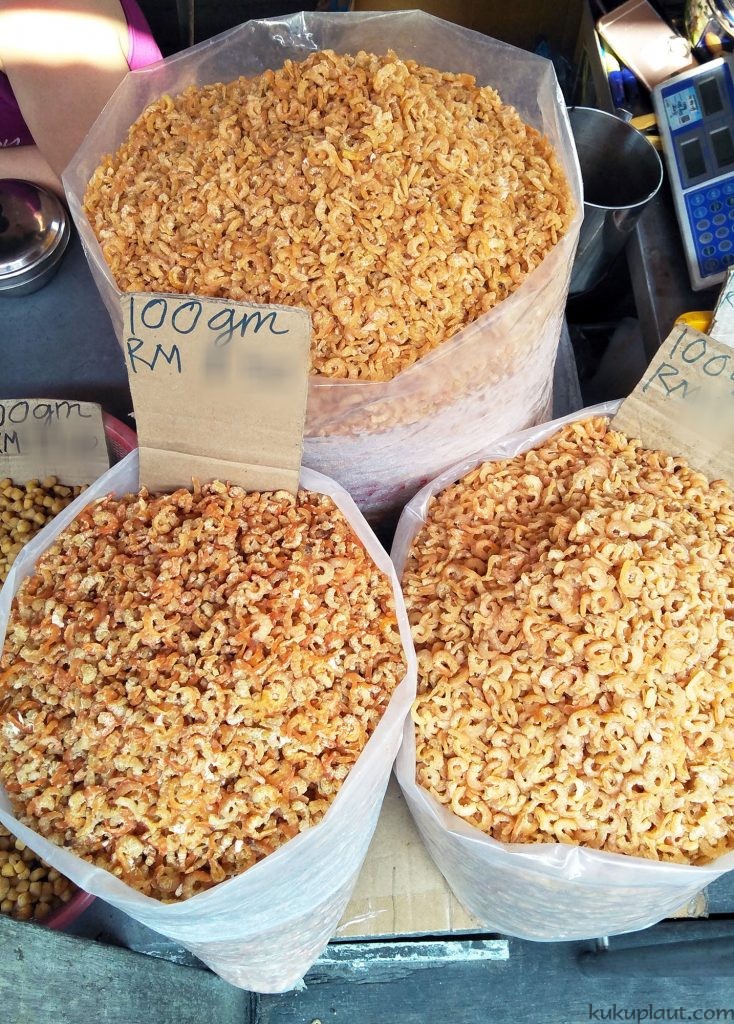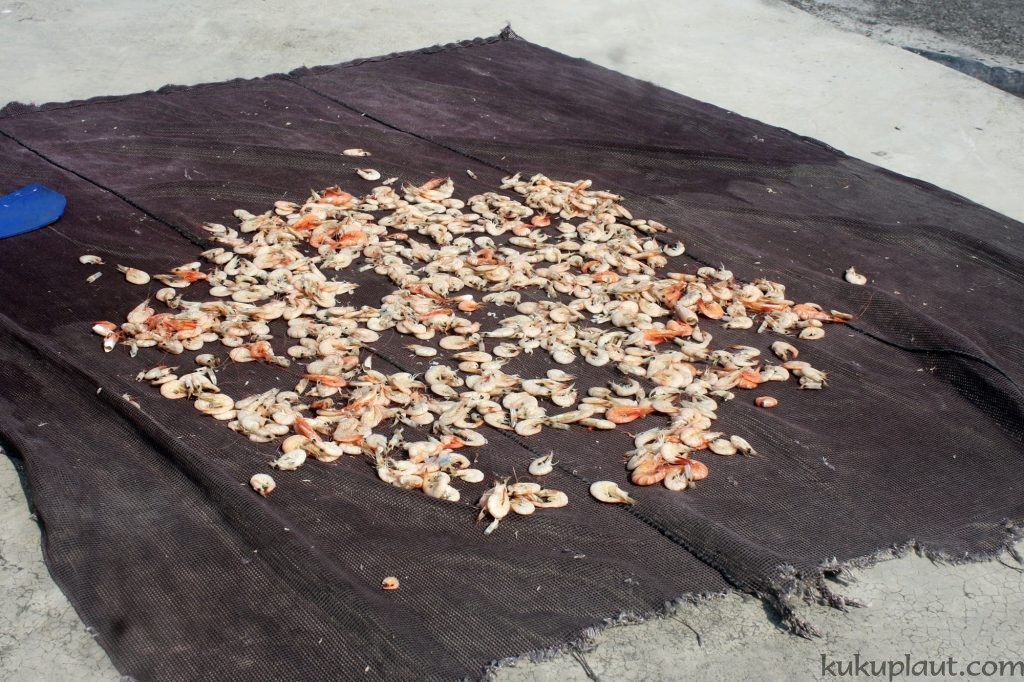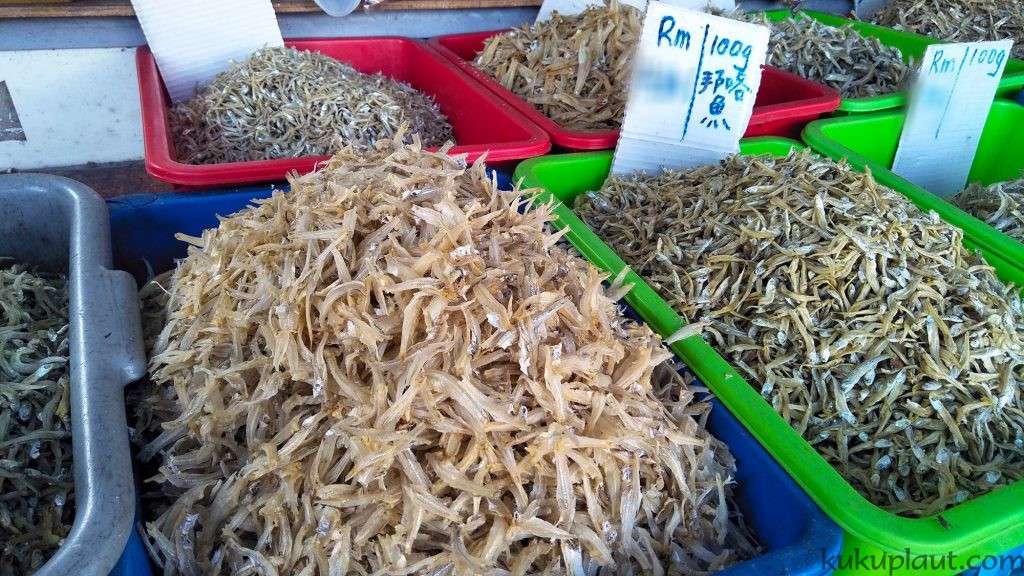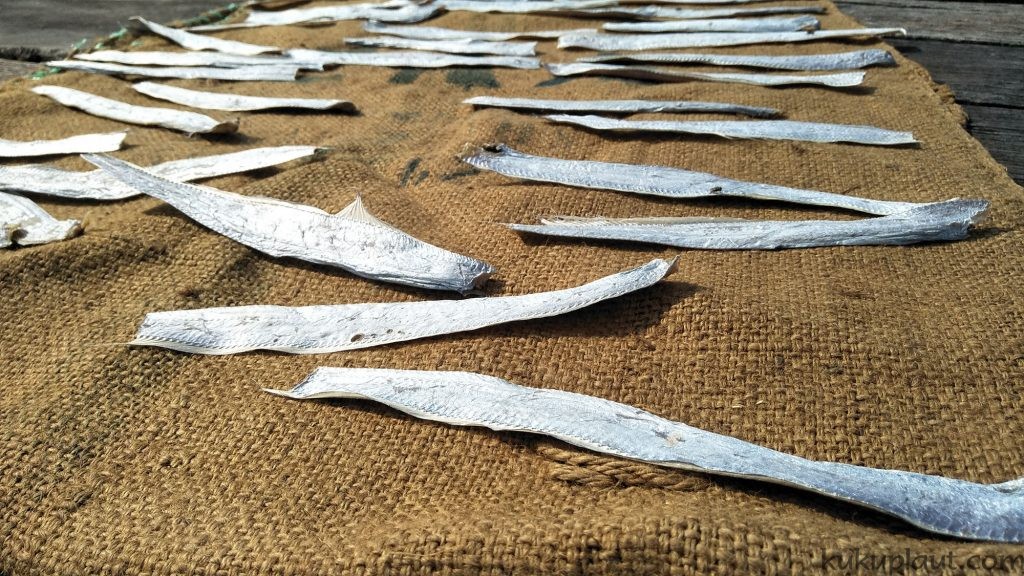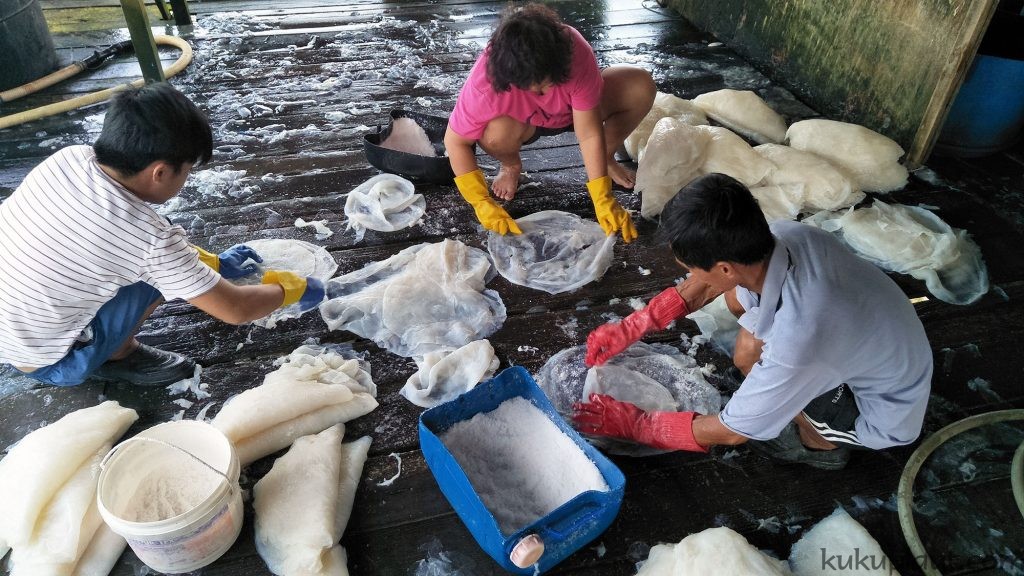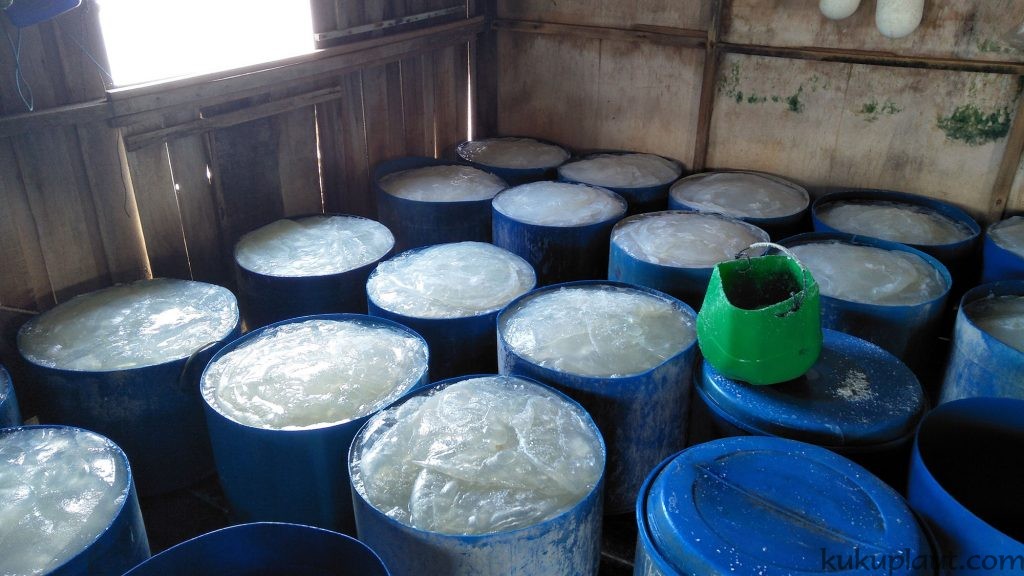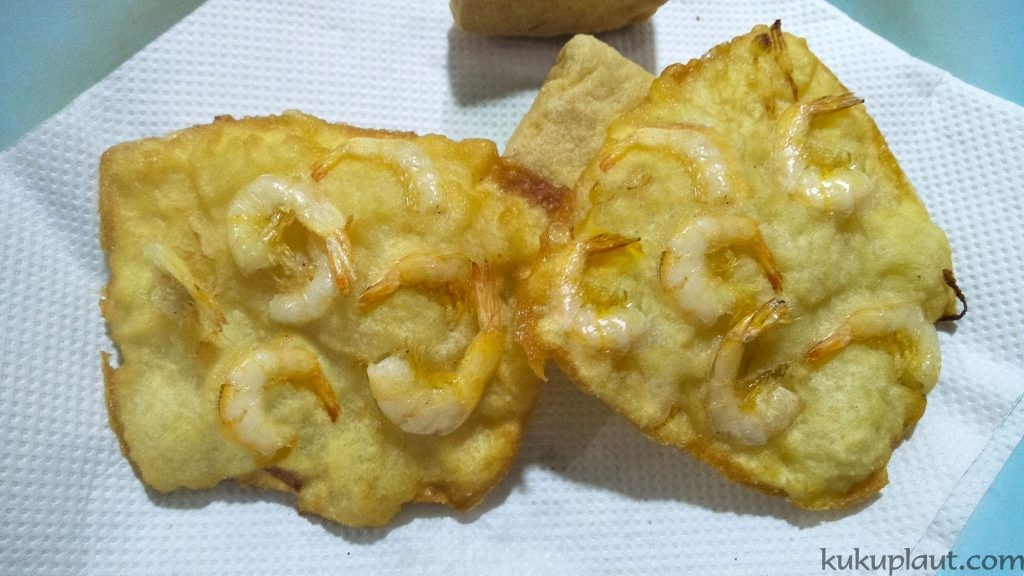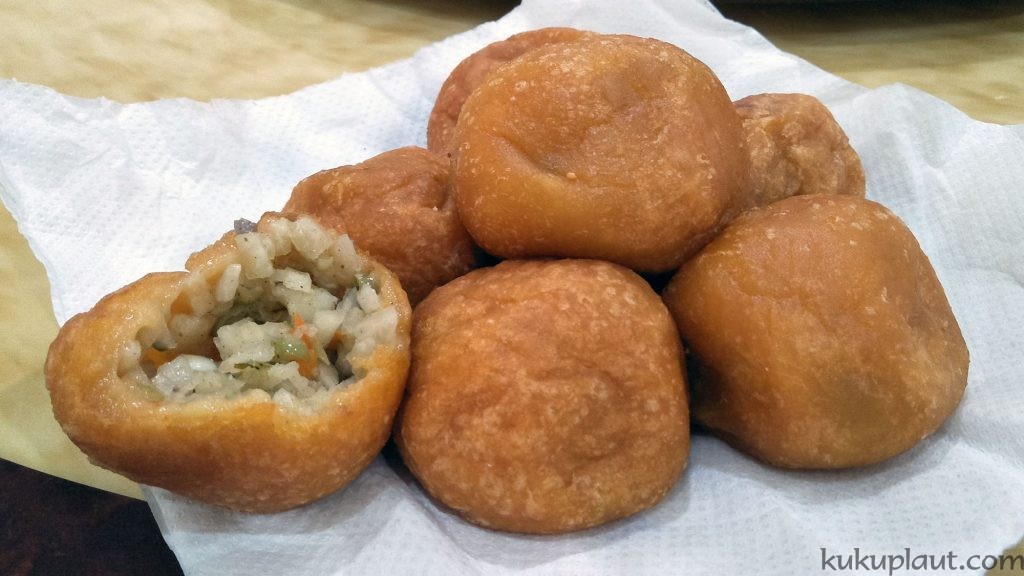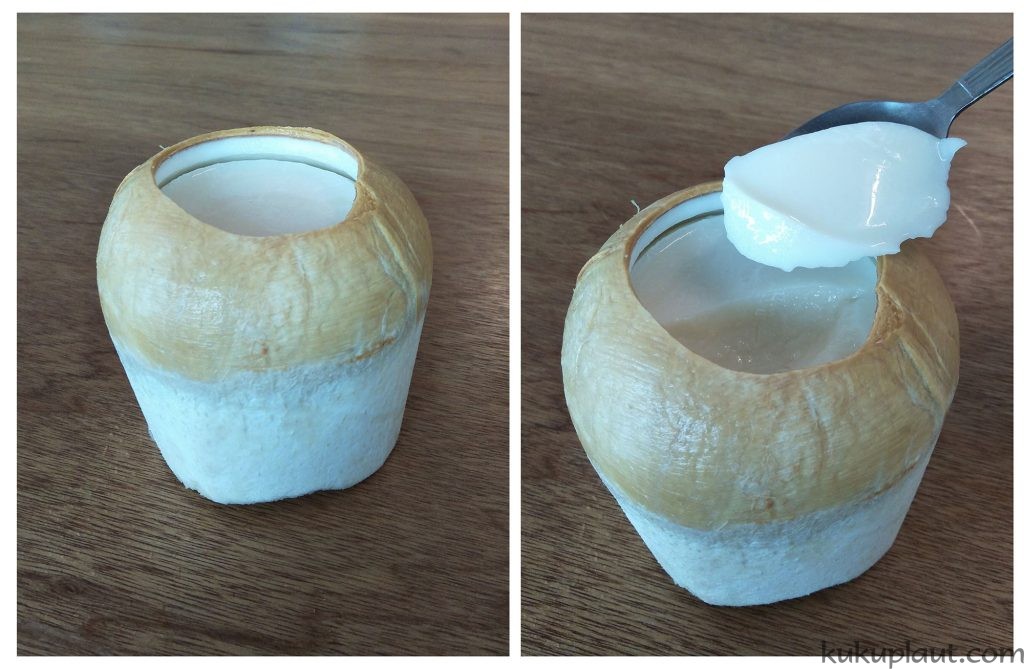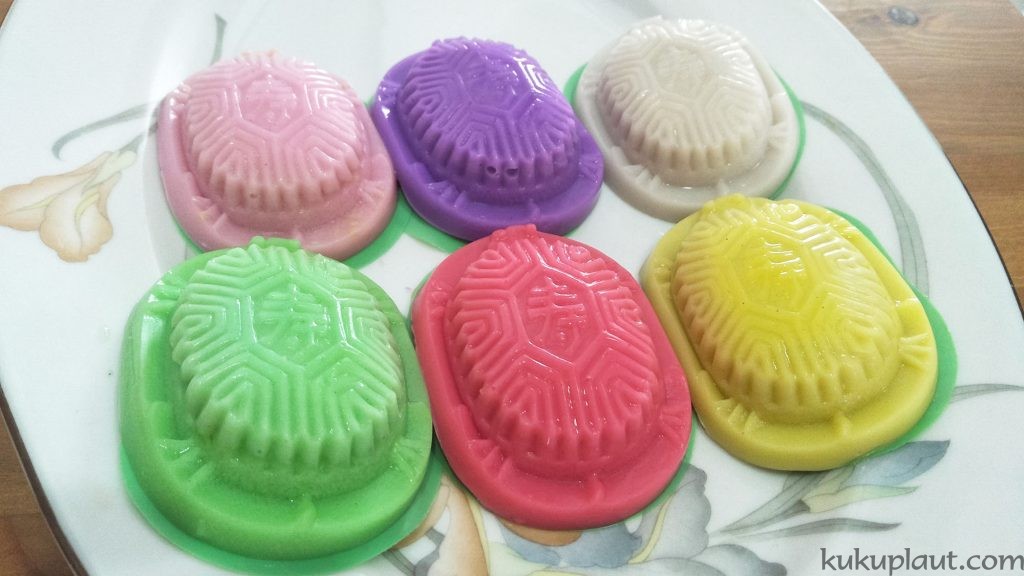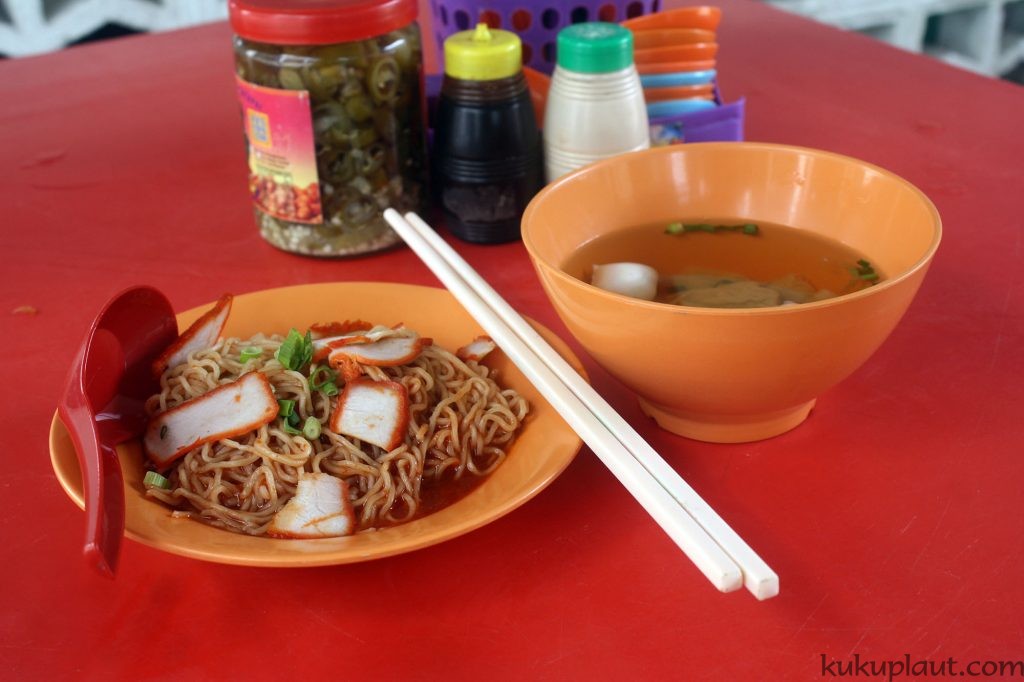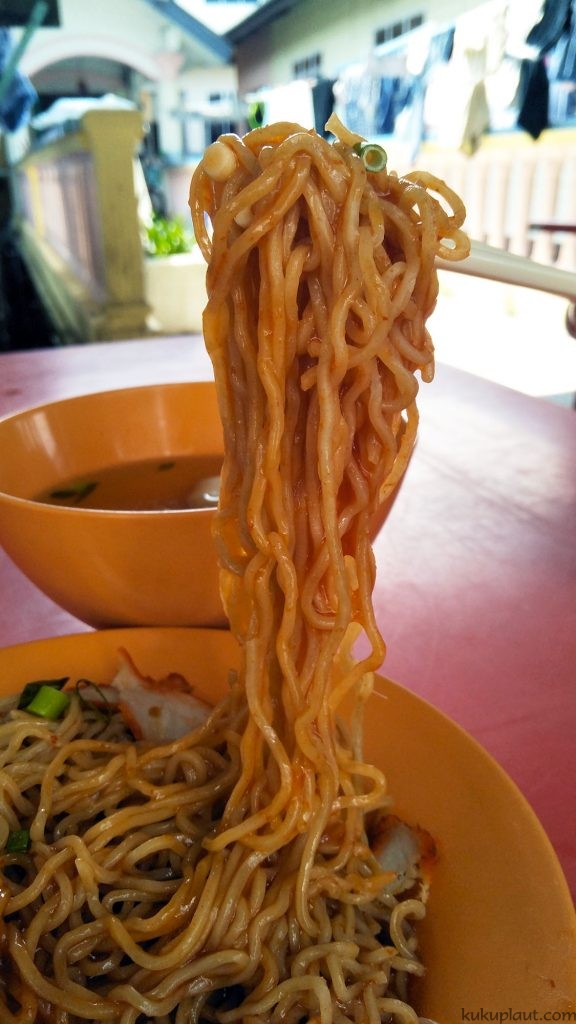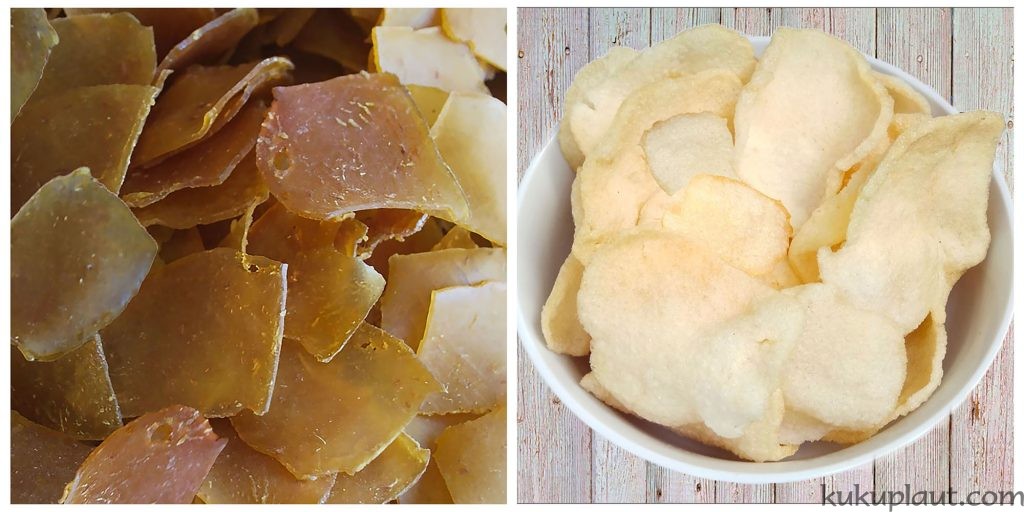Kukup Food Guide
To truly experience life in Kukup, the most important way is to try out the local food. This food guide will introduce Kukup’s local food to complete your journey in Kukup. We will introduce the most authentic local dishes that you must try.
Cincalok
Cincalok is a specialty product from Air Masin. It is fermented from fresh small shrimp with sea salt.
According to hearsay, the shrimps suitable for making cincalok can only be found within the Kukup sea area. Hence, Kukup is the largest production for cincalok. Cincalok is also exported to many other places or even other countries for sales.
Belacan/Fermented shrimp paste
Fermented shrimp paste, as known as belacan, is made from crushed small shrimps and added with salt. It is an indispensable ingredient in Southeast Asia. As the belacan has a unique flavor, it is often used as an important ingredient in many dishes to spice up the flavor.
For instance, the famous dish,《马来风光》spicy sweet potato leaves, use belacan as one of its main ingredients.
Another common way of using belacan is to make belacan chilli sauce, which can be enjoyed with a variety of foods. Having said that, the belacan chilli sauce can basically go with most of the food, especially food made by our Malay friends.
Dried Shrimp
There are various kinds of dried shrimps for sale in Kukup. It is one of the most popular products among tourist.
They can be fried, stir-fried and even used in soups among other different methods. All of which are delicious.
When the sun is out, the villagers will lay out the shrimps under the sun to enjoy “sunbathing” for it to dry out.
No chemicals such as colorings and preservatives are used or added. The dried shrimps from the village are absolutely sweet and delicious.
Dried Fish
Dried fish is made by drying fresh fish under the sun. The water slowly evaporates but the nutrients remain in the fish.
Dried fish has always been popular, not only because of its unique flavor but also because it is easy to preserve.
Jellyfish
As Kukup is a village with accessible seafood resources, the villagers make their catch into special dishes. Jellyfish is one of the examples.
Jellyfish contains various nutrients required by the human body. In addition, it also has the effect of clearing away heat and phlegm, and even lowering blood pressure.
In the past, fishermen did not catch jellyfish as they thought jellyfish was inedible. It was until recently, a lady living in Air Masin who was originally from Tong An, Fu Jian, China insisted that the jellyfish could be eaten. Only then did the locals started to try eating the jellyfish.
Jellyfish is now a local specialty. It is crunchy in taste and is often used to make jellyfish salad.
Shrimp Pancake
The shrimp pancake from Kukup is a very popular snack. The pancake is not deep fried; therefore, it is not too heaty.
The small shrimps need to have their shells removed. Then, they are added to the base, made of flour and potato flour. The main seasoning is soy sauce and chopped green onion.
The pancake is slowly sautéed over the fire and the masterpiece is the delicious shrimp pancake.
Crispy Prawn Fritters
The crispy prawn fritters are very similar to the shrimp fritters. The difference being is that the shrimp are not shelled.
The unshelled shrimp is added to the flour batter and deep fried into perfection.
The crispy prawn fritters are very common even in other areas in Malaysia. The crispy prawn fritters from Kukup are chewy, fluffy yet not soggy. You can taste the savory taste of the shrimp with every single bite.
Peng Hu Fried Wedding Cake
The villagers from Air Masin, a separate village which is located opposite Kukup Laut, are mostly from Tong An, Fu Jian, China. Whenever there is a wedding ceremony, the particular family will celebrate the wedding in a traditional and distinct way.
Similar to Kukup Laut, the family will put on red ornaments and decorations on their house. Upon seeing the decorations, fellow villagers will know that the family is having a wedding and will congratulate the host. However, what is distinct from the common custom is the host will give a pair of 炸枣, a traditional Peng Hu fried wedding cake, in return and inform the date and place of the wedding ceremony instead of giving a traditional wedding invitation.
The outer layer of the 炸枣is mostly made of potato flour, and the filling is made of red bean paste. All in all, the cake is about the size of a fist and is deep fried.
Without an official invitation, giving a pair of fried wedding cakes makes it a very unique custom for the Air Masin villager in Pontian district.
The locals often enjoy the wedding cakes, not only with the traditional red bean fillings but also with some other fillings such as peanuts or other vegetables. Sometimes, it could be coated with sesame seeds, which is very delicious.
Coconut Pudding
Coconut pudding is one of Kukup’s most unique desserts. Its strong coconut fragrance and smoothness of texture leave you longing for more.
Coconut puddings are made from Thailand coconuts. The milky white coconut pudding is not only soft and tender like bean curd, but also sweet and rich. It is definitely an ideal dessert to have in the hot weather.
The pudding is rich in coconut milk and served cold. That is why it is always a dessert that everyone loves!
Crystal Jelly
Kukup’s famous crystal jelly is shaped like the traditional ‘tortoise cake’ (ang ku kueh). At the first glance, people always think that they are ang ku kueh as they look exactly the same, but in fact, they are totally a different thing.
The shape of the tortoise’s shell has an auspicious meaning. For this reason, the colorful crystal jelly is made using the same mold as the ang ku kueh.
Kukup’s famous crystal jelly is made from agar agar, a jelly-like substance obtained from red algae. There are many different flavors of fillings, they taste refreshing and palatable.
It is especially refreshing to have some crystal jelly in a hot afternoon.
Wanton Mee
The famous wanton noodles (wanton mee), can be eaten in red sauce or black sauce. The eating preference varies for every individual.
Most villagers from Kukup prefer the wanton mee with red tomato sauce (ketchup). The ketchup wanton mee is sweeter in taste, as compared to wanton mee in the black sauce which is rather salty. For spicy lovers, you could also order the red spicy wanton mee.
Past down from older generations, another popular method of eating the wanton mee is to take away (ta bao) the wanton mee and give it some time to absorb the sauce until the noodles are completely cooled and expand a little bit in size. After a while, you can enjoy flavorful noodles.
Fried Zhongjiang Fish Beehoon
Although the fried Zhongjiang fish beehoon may seem to be very common, you may be surprised by the flavor of the fried fish beehoon. The beehoon absorbs all the flavors and the sweetness of the fresh fish, the texture of the beehoon is chewy and the fish is fresh and tender.
Zhongjiang fish thrives in sea areas with muddy marsh, that somehow makes its meat to be fresh and sweet. Fish caught from the open sea does not have this flavor.
As a matter of fact, Zhongjiang fish is a type of seasonal fish, and they are quite difficult to catch. The fishermen who catch one will normally eat it themselves instead of selling them for money.
Assam fish
Assam fish is served at some Malay stalls in the morning. As it is often sold out before noon, the locals know to go early if they wish to savor this delicacy as breakfast.
Kukup locals like to have relatively heavier breakfast than usual, normally with rice or noodles. In addition to the availability of fresh fish, the Malay stall owners normally like to prepare the fish in local flavors for the locals to enjoy.
Assam fish is sour, spicy and absolutely appetizing. It will stimulate your taste buds leaving you wanting more.
Spicy fried Keropok ends
The spicy fried Keropok ends is a unique dish, I am sure it can only be found in Kukup. This dish is spicy and chewy.
Fresh seafood is grounded and added to flour to form a dough. It is then cut into thin slices and dried in the sun. The slices are then deep-fried into the common Keropok we eat every so often.
But in order not to waste food, the ends of the dough which cannot be used for Keropok is used to make the unique dish, spicy fried Keropok ends. Fried with vegetables and other ingredients, this seemingly ordinary dish is actually quite delicious.


